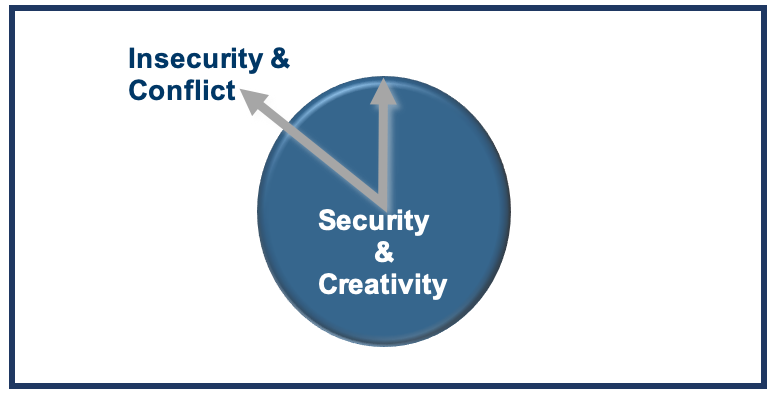Clarifying the Boundaries of Your Culture

This excerpt from The Shift from Me to Team, which will be published this year, is part of the discussion of Reinforcing Systems. Is there clarity in your organization about in-bounds and out-of-bounds behavior?
MY REQUEST OF YOU: We would appreciate your feedback. Please share what you like and what could be improved. #leadership #team #CultureClarification #PeakPerformance #CoreIdentity #ReinforcingSystems #team #teamdevelopment #ShiftFromMeToTeam
During the organizational Culture Clarification retreat, Guiding Principles were established, and everyone in the organization should understand what those principles mean. Each team member will have a feeling for what is in-bounds and out-of-bounds. They have been encouraged to celebrate behaviors that align to the shared Peak Performance Core Identity and step up to address behaviors that don’t, thus ensuring that organizational boundaries are respect.
There was an uproar during the medieval period when boundaries—a musical notation system—were put on music being created. There was significant demand for music composed throughout Europe, but it was passed on by imitating what was heard, and there could be many variations. The time was ripe for developing a written form of musical notation. Instead of the sporadic, listen/learn/play passing on of music to the next generation, the standardized documentation would perpetuate the music consistently. Some feared the limited number of notes would restrict creativity. Would this boundary stifle growth and the creation of innovative music?
The fears evaporated after implementation of the musical notation system. The proliferation of music was unprecedented. Boundaries can, indeed, enhance creativity.
Reinforcing the Right Thing to Do—Red Berenson
University of Michigan’s legendary Ice Hockey Coach Red Berenson is one of those rare leaders blessed with an innate sense of how to build teams for sustainable success. Early one Friday morning when I was Associate Athletic Director, Red Berenson came into my office. He said, “I have a problem. Our premier player, our goalie, is not going to class, and we have a team commitment: You go to class, you play; you do not go to class, you do not play. We play Michigan State tonight and tomorrow, and whoever wins these games wins the conference championship. And it is Parents’ Weekend, so if we lose, I will get a lot of heat.”
Red was a master leader. I affirmed that he was the head coach; only he knew what was right for the team. Whatever he decided, the Athletic Department would support him.
Red benched the player, the most successful goalie in the history of the NCAA. He showed the players that this team is special; it is not for everyone. It requires a commitment to something bigger than yourself. Michigan State won the conference championship, but something happened to the Michigan team.
All on the team heard the message: There is a responsibility to be a member of this remarkable team. Our standards are meant for every team member, with no exceptions.
Luck has a hand in winning National Championships, but you must be hitting on all cylinders to stay in the hunt. Michigan lost the conference championship that year but went on to win the NCAA National Championship.
Did benching the premier player play a role in this team’s success? Removing any confusion about the importance of upholding the team’s standards enabled the team to stay focused on their challenges. There are no shortcuts to long-term success, and there can be no distractions.
Red Berenson understands how to build unified teams for sustainable success.
Coach Berenson’s stand had a double impact. The team’s identity was reinforced, resulting in a reward. And the player found there was someone who cared about him and his personal development: It mattered to Coach Berenson to support him in becoming the strong leader he is today. Both identities were strengthened through one counterintuitive leadership move.
The Stage III Fulfillment (Benefiting Others) reinforcement by Red exemplified the responsibility of leadership. The best leaders build team members who understand they represent something bigger than themselves. This contrasts with pursuing the short-term Stage II Fulfillment (Learning, Growing, and Competing) gratification of winning the conference championship. Most leaders can learn this lesson.
Leaders are asked to hold their team members to a high standard for the benefit of each other. This are two aspects to this process: (1) celebrating exemplary Core Identity behaviors and actions and (2) addressing any perceived out-of-bounds behaviors or actions. Reinforcing Systems start with leadership role-modeling behavior. Leadership’s proactive efforts to recognize alignment throughout the organization makes them effective.






